#japanese game development elite
Photo

From the left: Hidetaka Suehiro, Keiichiro Toyama, Goichi Suda, Shinji Mikami and Fumito Ueda, posing for a group photo after dinner at Kintan Japanese BBQ in January 2020.
#fumito ueda#shinji mikami#goichi suda#keiichiro toyama#hidetaka suehiro#japanese game development elite#meeting of the minds
24 notes
·
View notes
Text
'I'm in Love with the Villainess' Anime - Episode 1 Review
An astounding and hilarious first outing for the series with the power to revolutionize Yuri
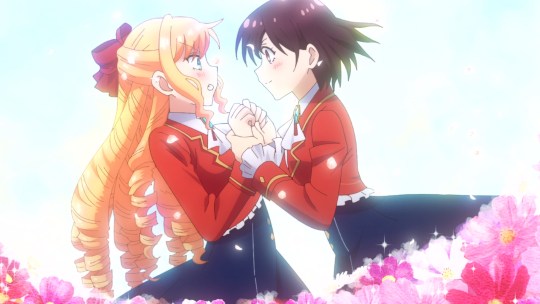
We are finally here, the long-awaited and much anticipated first episode of Platinum Vision’s I’m in Love with the Villainess anime aired on Tokyo MX and is streaming everywhere outside of Asia with a plethora of dubbing options, including English, on day one on Crunchyroll.
The first outing covers most of the events of the light novel’s first chapter, or the first three chapters of the manga, at a rapid but steady and not overwhelming pace. At this rate, the anime should be able to cover much of the series’ first arc, or the first two out of five books, in a single cour. Perhaps a bit less, depending on which of the story’s various adventures it elects to include. This is an exciting possibility, to be sure, as the story is a character-driven, socially mindful, and expertly written and, despite its fantasy setting, an exceptionally relevant tale of romance, socio-economic inequality, and of course, queerness.
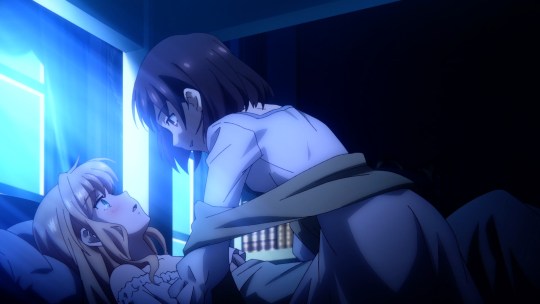
While the first arc of Villainess is a triumph, it would be a shame not to see at least some of the developments from the extra chapters that lead into the second story, like (spoilers for the end of volume 2) Rae and Claire’s wedding and their adopted twin daughters May and Aleah. If we are lucky, perhaps they will appear in the final episode or, dare to dream, a second season (end of spoilers).
Now, onto the show itself. For those who, for whatever reason, have not read Inori’s masterpiece, I’m in Love with the Villainess follows Rae Taylor. A salary worker who dies and is reincarnated as the protagonist of her favorite otome game, Revolution. However, Rae has no interest in any of the game world’s three eligible royal bachelors and has eyes only for the game villainess Claire François. Armed with exceptionally magical ability, Rae sets out determined to secure a happy ending for her beloved Claire against the coming revolution and perhaps win her heart in the process.
Now, the opening of I’m in Love with the Villainess is the series' weakest moment in all mediums, which, considering episode one’s outstanding quality, only highlights just how superb the Yuri masterpiece is as a whole. Even with its need to establish the setting, characters, and premise of the series, the premiere managed to be an excellent introduction and set the bar high with lots of laughs, entertainment, and service between our two leads.

I watched the Japanese audio, and Yu Serizawa and Karin Nanami are fantastic in these roles, with Serizawa playing up Rae’s teasing adoration and borderline masochism at full blast, and Nanami explicitly giving voice to Claire’s arrogance and frustration. She even manages to deliver a perfect Ojou-style laugh to seal the character’s elite status and lean into the show’s use of otome tropes. And having the leads sing the excellent opening and ending themes is just icing on the cake.
Speaking of tropes, while Ironi’s original work is a genre-defying masterpiece that broke the Yuri mold, it is never afraid to play with the genre’s iconography and its otome game setting. Every other scene had another allusion, including to the book’s cover. As always, I am likely overeager to see connections, however intentional they may be, but the academy’s halls harken to otome staples, the bells and strings of the first scene's soundtrack conjured blistering memories of Strawberry Panic (perhaps a sacrilegious comparison to make but I digress), and even an areal shot of the campus was another check mark on my “Scenic Yuri” theory.
Now, as mentioned, I’m in Love with the Villainess has to establish the groundwork here, and narratively, these are the weakest moments, often direct exposition, with a few exceptions like Rae’s conversation with her roommate Mash about maintaining Claire’s attention. The narration is at least accompanied by relevant and creative, if perhaps limited, animation. But to their credit, these moments are succinct, existing only as long as they have to in order to provide the necessary information and get out of the way for what matters most: the characters.
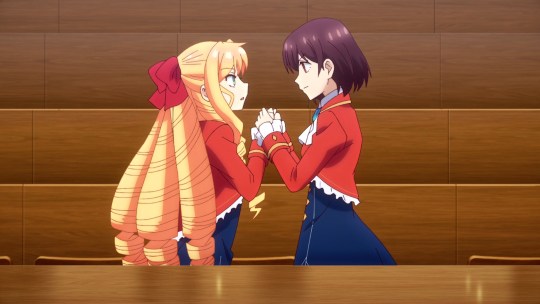
Rae and Claire are front and center from the very get-go, and there is little time wasted in showcasing Rae’s intense bottom energy or establishing Claire’s elitism and bewildered anger towards Rae’s excitement in the face of Claire’s carefully calculated cruelty. It is a montage of silly and fun competitions between the two that had me laughing and smiling all the way through, as the Yuri was present in full force, and gives glimpses at the mutual obsession the women have for each other that will soon blossom into a wonderful romance.
These early story beats have a light tone and focus on the bullying, teasing, and rivalry between Rae and Claire, a dynamic that previously and understandably made a subset of readers somewhat uncomfortable. However, assuming the anime unfolds in a similar manner to the manga and light novels, the narrative will explore meatier, heavier subject matter and a far deeper lesbian romance, all without losing its sense of fun and adventure. The next episode or two will be incredibly telling - as the source material is perhaps the most profound and forthright depictions of LGBTQ identity in Yuri, and that all starts with a pivotal conversation that, if it is included, will be coming up shortly.
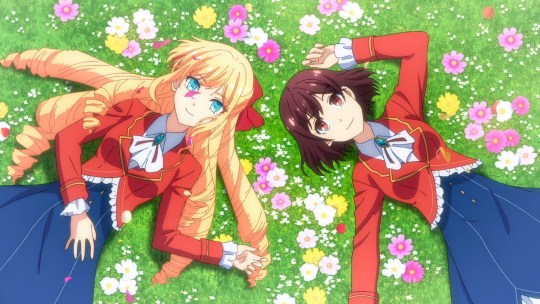
Overall, I am incredibly excited for this series. The first episode is everything I had hoped for out of an adaptation of one of my favorite works of all time, save the animation, which is average at best. While there is a lot more to see, and we will have to wait to know if I’m in Love with the Villainess lives up to its incredible potential and source material, I am extremely hopeful. We have one of the funniest, most thoughtful, and queerest works of Yuri transformed into a stunning anime project unlike anything that has come before and offers the chance at not just a new Yuri “gateway” but to continue the work of its source material in revolutionizing the genre.
Ratings:
Story – 8
Characters – 10
Art – 5
LGBTQ – We shall see…
Sexual Content – 3
Final – 8
I'm in Love with the Villainess is streaming on Crunchyroll with English sub/dub.
Review made possible by Avery Riehl and the rest of the YuriMother Patrons. Support YuriMother on Patreon for early access, exclusive article, and more: patreon.com/yurimother
#yuri#Reviews#girls love#lgbt#anime#i'm in love with the villainess#ILTV#lgbtq#gay#gl#queer#lesbian#manga#yuri anime#gl anime
621 notes
·
View notes
Text
Okay. I've been playing Tokyo Debunker today, since the release happened to catch me on a day when all I'd planned to do was write fanfiction. I just finished reading the game story prologue (it was longer than expected!), so here's a review type post. If you're reading this post not having seen a single thing about this game: it's a story-based joseimuke gacha mobile game that just released globally today. It's about a girl who suddenly finds herself attending a magic school and mingling with elite, superhuman students known as ghouls. If you look in the tumblr tag for the game you'll see what appears to be a completely different game from 2019 or so: they retooled it completely midway through development, changing just about everything about it due to "escalating competition within the gaming industry."

I'll talk about how this looks like a blatant twst clone at the end.
Starting with the positive: The story is charming. I enjoyed it thoroughly the entire time and am excited to read more. The mix between visual novel segments and motion comics was really nice--it broke things up and added a lot of oomph to the action or atmospheric scenes that visual novels generally lack. I like the art in the comic parts a lot. the live2d in the visual novel parts is... passable. Tone-wise, I think the story was a little bit all over the place and would like to see more of the horror that it opened on, but I didn't mind the comedic direction it went in either. The translation is completely seamless. The characters so far all have unique voices and are just super fun and cute. Of the ones who've had larger roles in the story so far, there's not a single one I dislike. It's all fully voiced in Japanese and the acting is solid. (I don't recognize any voices, and can't seem to find any seiyuu credits, so it seems they're not big names, but they deliver nonetheless.) Kaito in particular I found I was laughing at his lines a ton, both the voicing and the writing.

He's looking for a girlfriend btw. Spreading the word.
The problem is like. The gameplay is the worst dark-pattern microtransaction-riddled bullshit I've ever seen. Hundred passive timers going at all times. Fifty different item-currencies. Trying to get you to spend absurd amounts of real world money at every turn. There's like five different indicators that take you to various real-money shop items that I don't know how to dismiss the indicator, I guess you just have to spend money, wtaf. Bajillion different interlocking systems mean you have zero sense of relative value of all the different item-currencies. I did over the course of the day get enough diamonds for one ten-pull, which I haven't used yet. Buying enough diamonds for a ten-pull costs a bit under $60 (presumably USD, but there's a chance the interface is automatically making that CAD for me--not gonna spend the money to check lmfao), with an SSR rate of 1%. BULLSHIIIIIT.
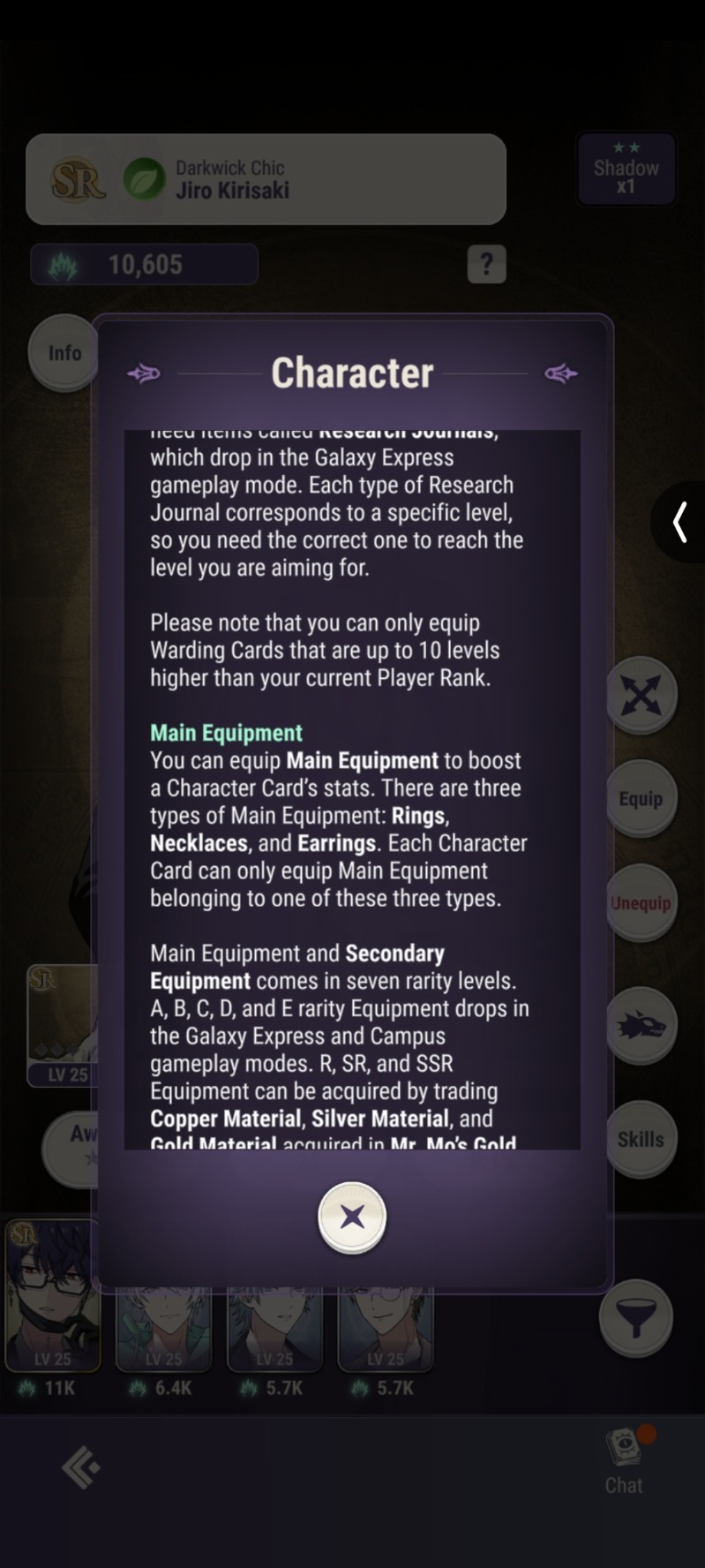
There's like a goddamn thousand-word essay explaining the dozen different types of character upgrades and equippables and equippables for the equippables!! Bad! Bad game design! That's just overcomplicating bullshit to trick people into thinking they're doing something other than clicking button to make number go up! That is not gameplay!
In terms of the actual gameplay, there is none. The battle system is full auto. There might be teambuilding, but from what I've seen so far, most of that consists of hoping you pull good cards from gacha and then clicking button to make number go up. There's occasional rhythm segments but there's no original music, it's just remixes of public domain classical music lmao. I'd describe the rhythm gameplay as "at least more engaging than twisted wonderland's," which is not a high bar
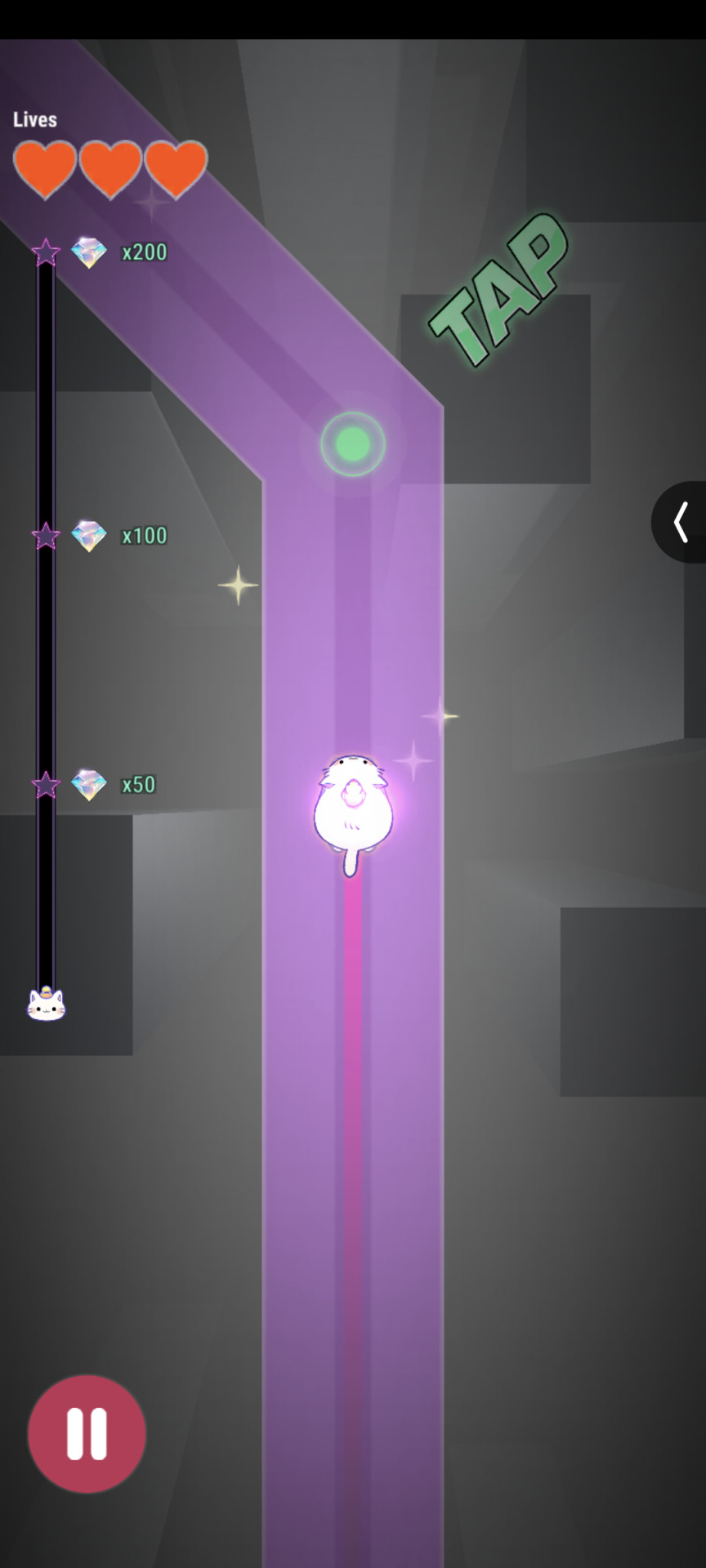
At least there's a cat in the rhythm bit.
And like, ok, I gotta remark on how derivative it is. Like I mentioned in my post earlier, this game is unabashedly aping twisted wonderland's setting and aesthetic. (That said, most of the stuff it steals from twst is magic school stuff that twst also basically stole from Harry Potter, so...?) However, it isn't exactly like twst: in this one, the characters say fuck a lot and bleed all over the place and do violence. Basically, the tone is a fair bit more adult than twst's kid-friendly vibe. (Not, like, adult adult, and I probably wouldn't even call it dark--it's still rated Teen lol. Just more adult than twst.)
Rather than just being students at magic school, the ghouls also go out into the mundane world to go on missions where they fight and investigate monsters and cryptids. Honestly, the magic school setting feels pretty tacked-on. The things that are enjoyable about this would've been just as enjoyable in about any other setting--you can tell this whole aspect was a late trend-chasing addition, lmao. So, yeah, it's blatantly copying twst to try to steal some players, but... Eh, I found myself not caring that much. Someone more (or less) into twst than me may find it grating.
Character-wise, eh, sure, yeah, they're a bit derivative in that aspect too, but it's a joseimuke game, the characters are always derivative. Thus far the writing & execution has been solid enough that I didn't care if they were tropey. If I were to compare it to something else, I'd say the relationship between the protagonist and the ghouls feels more like that of the sage and wizards in mahoyaku than anything from twst. There's some mystery in exactly what "ghouls" are and their place in this world that has me intrigued and wanting to know more about this setting and how each of the characters feels about it. I have a bad habit of getting my hopes up for stories that put big ideas on the table and then being disappointed when they don't follow through in a way that lives up to my expectations, though.
So, my final verdict: I kind of just hope someone uploads all the story segments right onto youtube so nobody has to deal with the dogshit predatory game to get the genuinely decent story lol. Give it a play just for the story if you have faith in your ability to resist dark patterns. Avoid at all costs if you know you're vulnerable to gacha, microtransactions, or timesinks.
#suchobabbles#Tokyo Debunker#it's a global simultaneous release so I'm curious to see how it ends up doing in Japan#it's gonna be competing directly with stellarium of the fragile star which releases in a few days lmao. and is about a magic alchemy school#looks like the two games twt accounts have a similar number of followers#and then theyre competing with bremai releasing in may...#also adding this at the very end since i cant confirm anything:#but i found out abt this game bc it was rt'd by the former localization director/translator of A3en#i dont know if she worked on it or maybe her friend or maybe shes just hype! who knows! but i think her word (or rt) is worth something
138 notes
·
View notes
Text
Pokemon Scarlet and Violet DLC ‘The Hidden Treasure of Area Zero Part 2: The Indigo Disk’ details Syncro Machine, flight, and legendary Pokemon
Gematsu Source

The Pokemon Company and developer Game Freak have released new information, video, and screenshots for Pokemon Scarlet and Pokemon Violet downloadable content “The Hidden Treasure of Area Zero Part 2: The Indigo Disk,” which is due out on December 14. Today’s update introduces the Syncro Machine, the power of flight, and legendary Pokemon encounters.
Get the details below.
The Synchro Machine
Once players progress far enough in their adventure in “The Hidden Treasure of Area Zero Part 2: The Indigo Disk,” they’ll be able to use a device called the Synchro Machine to see the world through the eyes of their Pokemon. While synchronized with one of their Pokemon, they can move around and battle wild Pokemon—a fresh new way to play the game. It appears that this device is still a prototype. Players can use it once they’ve helped a scientist in the Terarium with her research.
The Power of Flight
The Legendary Pokemon Koraidon or Miraidon will gain the power to fly for the first time when Trainers take on the Elite Trial set by Amarys of the BB League Elite Four. While this power is at first believed to be only temporarily imparted, it can apparently be made permanent, allowing Koraidon and Miraidon to fly at any time—but only once players have made it far enough in their adventure. Trainers will be able to fly wherever they please with their Legendary Pokemon and enjoy the sense of freedom that only an open world can provide.
Legendary Pokemon
After completing the main story of “The Hidden Treasure of Area Zero Part 2: The Indigo Disk,” Trainers can meet a curious character named Snacksworth at Blueberry Academy. By completing Blueberry Quests (BBQs) in the Terarium, Trainers can earn snacks from Snacksworth that will allow them to encounter certain Legendary Pokemon from throughout the series back in the Paldea region. He’ll also share his extensive knowledge about these Pokemon with Trainers—as well as tall tales of his own heroic encounters with them.
Pokemon Scarlet and Pokemon Violet are available now for Switch.
Watch the trailer below. View the screenshots at the gallery.
Get Ready For Your Trip to Blueberry Academy!
English
youtube
Japanese
youtube
#The Indigo Disk#Pokemon Scarlet and Violet#Pokemon Scarlet#Pokemon Violet#Pokemon#Game Freak#The Pokemon Company#Nintendo#Nintendo Switch#RPG#Gematsu#may be updated
20 notes
·
View notes
Note
Since you're anisports posting, can you share your thoughts about Yuasa's Ping pong ?
the very short answer is man I really gotta watch more of Ping-Pong! so far I've only seen the first episode, but it was pretty interesting in terms of character dynamics. I hear the animation is really creative later on - I mean go figure, it's a Yuasa project - so I really gotta watch more. (I am actually really bad at getting round to watching stuff outside the context of the movie night... hell I'm like 7 episodes behind dunmeshi right now.)
so, from memory then... what I did find striking in the first episode is this theme of like, elitism and international rivalry. the story begins with a Chinese player coming to Japan and finding himself contemptuous of how shitty the Japanese players are in this pathetic backwater where nobody is good at ping-pong. and being good or bad at ping-pong is a big deal for these characters.
'China is much better at ping-pong' is not a concept I'd really been exposed to before that! (I absolutely could not tell you what countries are supposed to be good at ping-pong.) but it does resonate with a certain broader recurring theme you occasionally see of like... whether Japanese (xyz) can hope to stack up against the mighty (xyz)-doers of whatever other country. whether that's playing ping-pong or building fighter planes (a sentiment you see motivating the characters in The Wind Rises).
and that makes me think about odd places I've seen that sorta nationalist underdog sentiment crop up, not just in Japan. whether Chinese social media critics writing scathingly about guómàn out of a perceived need to rise to the level of Japanese and American animation, or Japanese game developers taking to heart the cruel sentiments expressed about Japanese games by other developers during the 2010s and talking about wanting to make Japanese RPGs (for example) compare with Western ones. maybe even the South Korean government going all in on supporting a fraudulent geneticist out of a feeling that the country had to prove itself scientifically.
these examples are all from Asian countries but I definitely don't think this is something that only happens in Asia lol. that said, it's kind of a contrast to the general attitude in my country, where nationalist sentiment more often looks like empire-nostalgia or blithely presuming superiority. people don't so often seem to feel like we collectively have something to prove. maybe there's a sense of embarassment when the UK loses the football [soccer] again, since that one's supposed to be our thing. it was kinda darkly funny when the womens' team actually did win the football, and suddenly people cared about womens' football.
I don't really have much of a thesis on that though, I'm just running along a tangent here. I'll have more interesting things to say about the sports, and the boys that play the sports, when I give Ping-Pong a proper watch through.
9 notes
·
View notes
Text
Blue Lock

I feel like this was one of those anime that flew under the radar, at least as far as overseas fans are concerned.
Blue Lock is like high energy Naruto-esque battle anime meets FIFA Street. The story is set around 2018 where in the real world, the Japan national team just finished 16th in the FIFA World Cup. Ego Jinpachi, a somewhat maniacal figure with unorthodox methods is hired to lead Japan. He hypothesises that what Japanese players are missing is "an ego" and thus develops Blue Lock, a training program designed to create the world's greatest striker. Elite high school football players are recruited into Blue Lock, the catch being that failing it would result in them never being permitted to represent Japan.
The Blue Lock setting is what gives this show an edge over your typical sports anime. It creates plot developments that border on fantastical where instead of just your typical football drills and matches, Ego is able to devise rounds that are akin to Squid Game or a reality TV show like Survivor. Admittedly the stakes do feel quite low which can sometimes make the pressure the players face a little funny. But I've never come close to representing my country in any kind of sports so perhaps being in that position really does feel like a life or death situation.
I love the cast of characters who each embody a different personality, from your cold geniuses, talents borne from hard work and just flat out wild cards. Bachira is probably by favourite but I have a lot of love for Nagi too! Also just as a random aside, the names are really unique and anime-esque. I've never met anyone in Japan called Bachira, Raichi or Gagamaru. Super interesting readings for their kanji.
My favourite thing about Blue Lock is the animation itself. Everything from the setting to the music is amazing at creating such a high tension environment with scenes that really exude power. Watching them play football was a lot like watching a 1v1 fight in any of your typical shounen battle anime. For this reason, I'm waiting patiently for season two rather than reading the manga because I really want to experience the story fresh and for the first time.
9 notes
·
View notes
Text
THEME: Monster Hunters
This week's games are about monster-hunters, whether it be Victorian monster specialists, modern-day demon hunters, or teenage vampire slayers.


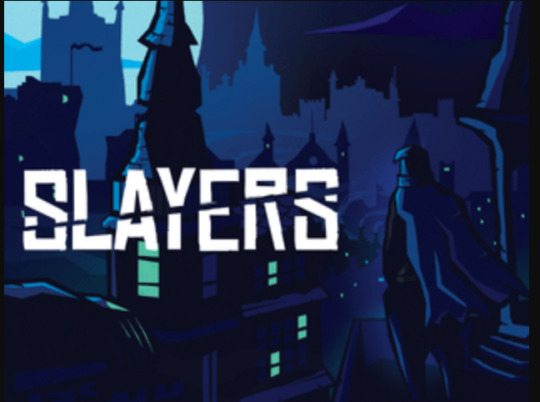

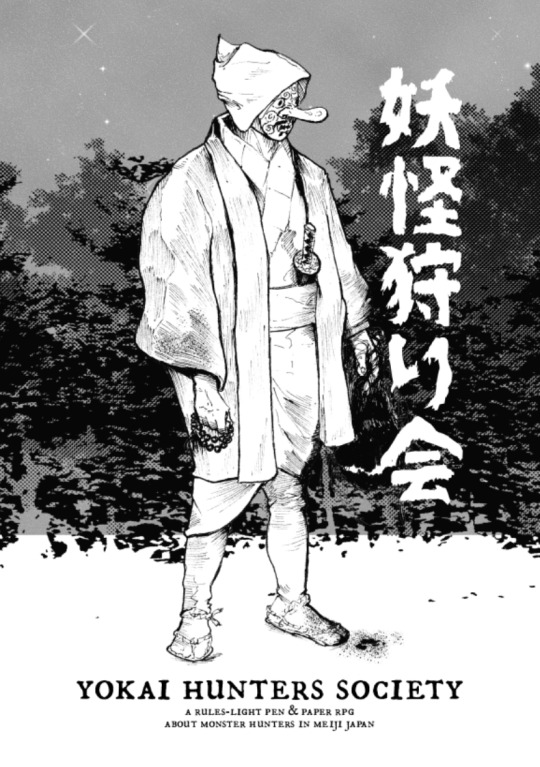


Sunset Kills, by Hedgemaze Press
Sunset Hills, Florida: A sleepy college town lucky enough to have its own indoor mall, zoo and minor league baseball team. Unfortunately, it’s also unlucky enough to be situated over the Shadowgate, a nexus of supernatural energies and a portal used by demons to enter our world. Thankfully, Sunset Hills is home to a small band of heroes willing to battle the monstrous forces that would take over the world.
Sunset Kills is a tabletop roleplaying game about a family or group of friends who investigate supernatural mysteries and fight the monsters trying to take over their town. It’s a little bit horror, a little bit drama, and a little bit campy comedy in the vein of shows like Charmed and Buffy the Vampire Slayer.
Sunset Kills uses a simplified version of the Apocalypse World system, perfect for new players or those new to Powered by the Apocalypse-style games. At only 8 pages, it's a quick read, and it provides examples of play so new players can get a bit of the rhythm of play figured out beforehand. Right now there are only 4 playbooks, but the game is currently in development so I expect there is more to come.
18XX Night, by Deep Light Games.
THE LONGEST NIGHT BEGAN: After doing a terrible job persecuting the dark creatures, the religious order counts its bad deeds. Decided to do good through other hands, it supports the last force remaining, this one with no political biases.
You are an elite force of monster hunters tracking down the remaining corrupt creatures in a part of the world where the sun is a rare appearance. These abominations are the best of each's own kind. Walking into the night, can you be the light?
18XX Night is a 24XX micro-game, using the standard 24XX rules. This means character creation is quick, GM prep is minimal, and it's easy to pick up another character if yours happens to die. This is Victorian-style monster hunting, in a world of gas lamps and misty nights. If you're looking for a way to bring up classic vampire-hunting stories, or if you want to send your players up against a pack of werewolves, this will give you a classic monster-hunting feel.
Yokai Hunters Society, by chema (Punkpadour).
"In the highest level a man has the look of knowing nothing," - Yamamoto Tsunetomo, Hagakure.
Yokai Hunters Society is a rules-light, pen & paper role-playing game in which you fight Japanese monsters, or yokai. The adventures you can play in Yokai Hunters Society range from facing the monster of the week, to complex investigations or political plots, to routine cleansing jobs. The writer of this game recommends taking this game from a horror tack, although it isn't strictly necessary.
This game is built using the Tunnel Goons framework, using dice rolls to determine your character's background, personality, and traits. You will exert control over the kind of Paths your character will likely take, and you'll be keeping track of things like equipment in order to give yourself an edge in certain situations. The PDF contains both a thorough explantation of the rules, as well as a concise description of Tokugawa-era Japan. The GM section is a mix of advice for running a game and random tables to help you generate missions, locations, NPCs and more. If you want an alternative twist to monster-hunting, Yokai Hunters Society might be the game for you.
Slayers, by Gila RPGs.
The City sits at the nexus of the world. Once you're inside it, it is the world. Something drives the borders of The City ever-onward, crawling towards the horizon. Urban sprawl made real. Neighborhoods appear and disappear overnight, The City is filled to brim with no shortage of interesting characters, cultures...and monsters. That's where you come in, Slayer.
Slayers is a tabletop RPG of mercenaries and monster hunters for hire. Known by locals as Slayers, players wander a haunted city, cursed long ago to expand towards the horizon forever. Slayers help clean out the monsters that infest the alleyways and shadows, and those that the city seems to be manifesting on its own.
It's slay or be slain. Better get to work, Slayer.
Slayers has 4 classes to choose from, and boasts a unique element of asymmetrical combat. Each player class is designed to work differently, which means the game that is being played will be different depending on the kind of character you choose. If you want more information about the setting, the creator has compiled a Slayers Almanac, which details different districts of the city, as well as released a supplement called Dust, which includes more locations, factions, and a new class, called the Deadeye. There's a lot of Slayers content out there for you to work with, which will alter the tone and feel of your game, so this is worth checking out!
Monster of the Week, by Evil Hat Productions.
Most people don’t believe in monsters, but you know the truth. They’re real, and it’s your task to bring them down.
If you want a more detailed Powered by the Apocalypse game about monster hunters, look no further than Monster of the Week, a game that takes inspiration from a number of different monster-hunting media and gives you the tools to create your own custom setting in which your characters go up against Chupacabras, werewolves, vampires, and perhaps even the Storyteller's own personal brand of horror!
As an established game, this book comes with a multitude of examples, detailed rules, and a wealth of advice for GMs in order to get them started. There's a reason why it's beloved by many fans of PbtA games.
Monster Guts, by Wheels Within Wheels Publishing.
Set in a post-capitalism world where monsters bio-engineered to extract resources have destroyed much of the world, you must hunt these creatures to sustain your village, one of the few settlements in the Pacific Northwest to have survived. You'll also harvest tags that you can slot into your weapons and garb to power up your scavenger.
Monster Guts uses the LUMEN system to provide a game of post-apocalyptic monster hunting, using three stats: CRUSH, SLICE, and PIERCE. It has some inventory-tracking, and a core mechanic that involves taking the best result from a roll using a number of d6's. The game is structured so that each hunt takes about 90 minutes - so you could have a short and sweet session, or fit two hunts into a longer session.
This game is beloved enough to have a number of supplements released on itch.io, which is great if you want to expand upon the base game. If you're looking for a monster-hunting game that doubles as a great introduction to LUMEN, you should check this out.
#iHunt: Killing Monsters in the Gig Economy, by Machine Age Productions
Be a hero. You pick the hours.
#iHunt is a story telling game about killing monsters in the gig economy. In it, you play millennials scraping by paycheck to paycheck to make ends meet. A gig app called #iHunt offers them more money than they've ever made to hit the streets and kill vampires, werewolves, demons, and anything else that goes bump in the night.
This game uses a modified version of the Fate Core rulebook - but you don't need the rulebook to play. Fate Core Rules can be found for free online, but the game itself should provide everything you need. What really sets iHunt apart is how it's published: the core game has everything you need to play, but Machine Age Productions also regularly releases zines that add new apps, new character options, story threads, and other goodies to the game. It's incredibly modular, which allows you to pick and choose what you want to be part of your game - and if you want everything, there are Season books in which a number of zines have been compiled for you!
94 notes
·
View notes
Text

Chapter 4. Environment
No philosophy or movement for liberation can ignore the connection between human exploitation of the environment and our exploitation of one another, nor can it ignore the suicidal ramifications of industrial society. A free society must forge a respectful and sustainable relationship with its bioregion, on the understanding that humans depend on the health of the entire planet.
What’s to stop someone from destroying the environment?
Some people oppose capitalism on environmental grounds, but think some sort of state is necessary to prevent ecocide. But the state is itself a tool for the exploitation of nature. Socialist states such as the Soviet Union and People’s Republic of China have been among the most ecocidal regimes imaginable. That these two societies never escaped the dynamics of capitalism is itself a feature of the state structure — it necessitates hierarchical, exploitative economic relationships of control and command, and once you start playing that game nothing beats capitalism. However the state does present the possibility of forcibly changing people’s behavior on a massive scale, and this power is attractive to some environmentalists. There have been a few states in world history that enforced protective measures domestically, when saving the environment coincided with their strategic interests. One of the foremost is Japan, which halted and reversed deforestation in the archipelago around the Meiji period. But in this case and other cases, domestic environmental protections enforced by the state were coupled with greater exploitation abroad. Japanese society consumed increasing amounts of imported wood, fueling deforestation in other countries and providing an incentive for the development of an imperial military to secure these vital resources. This led not only to environmental devastation but also to warfare and genocide. Similarly in Western Europe, statist environmental protections came at the expense of colonial exploitation, which also resulted in genocide.
In smaller-scale societies, the existence of an elite tends to fuel environmental exploitation. The renowned social collapse on Easter Island was caused in large part by the elite, who compelled the society to build statues in their honor. This statue-building complex deforested the island, as large numbers of logs were needed for scaffolding and transportation of the statues, and farmland to feed the laborers came at the expense of more forests. Without forests, soil fertility plummeted, and without food the human population plunged as well. But they didn’t just starve or decrease their birth rate — the clan elites warred with one another, knocking down rival statues and carrying out raids that culminated in cannibalism, until nearly the entire society died off.[62]
A decentralized, communal society with a commonly held ecological ethos is the best equipped to prevent environmental destruction. In economies that value local self-sufficiency over trade and production, communities have to deal with the environmental consequences of their own economic behaviors. They cannot pay others to take their garbage or starve so they can have an abundance.
Local control of resources also discourages overpopulation. Studies have shown that when the members of a society can directly see how having too many children will diminish the resources available for everyone, they keep their families within a sustainable limit. But when these localized societies are incorporated into a globalized economy in which most resources and wastes are imported and exported, and scarcity results from seemingly arbitrary price fluctuations rather than the depletion of local resources, populations climb unsustainably, even if more effective forms of contraception are also available.[63] In Seeing Like a State, James Scott explains how governments enforce “legibility” — a uniformity that enables comprehension from above, in order to control and track subjects. As a result, such societies lose the local knowledge necessary to understand problems and situations.
Capitalism, Christianity, and Western science all share a certain mythology regarding nature, which encourages exploitation and contempt, and views the natural world as dead, mechanical, and existing to satisfy human consumption. This megalomania masquerading as Reason or Divine Truth has revealed itself beyond all doubt to be suicidal. What is needed instead is a culture that respects the natural world as a living, interconnected thing, and understands our place within it. Bruce Stewart, a Maori writer and activist, told an interviewer, pointing to a flowering vine he had planted by his house,
This vine no longer has a name. Our Maori name has been lost, so we’ll have to find another. Only one of this plant remained in the world, living on a goat-infested island. The plant could go any day. So I got a seed and planted it here. The vine has grown, and although it normally takes twenty years to bloom, this one is blooming after seven.
...If we are to survive, each of us must become kaitiaki, which to me is the most important concept in my own Maori culture. We must become caretakers, guardians, trustees, nurturers. In the old days each whanau, or family, used to look after a specific piece of terrain. One family might look after a river from a certain rock down to the next bend. And they were the kaitiaki of the birds and fish and plants. They knew when it was time to take them to eat, and when it was not. When the birds needed to be protected, the people put a rahui on them, which means the birds were temporarily sacred. And some birds were permanently tapu, which means they were full-time protected. This protection was so strong that people would die if they broke it. It’s that simple. It needed no policing. In their eagerness to unsavage my ancestors Christian missionaries killed the concept of tapu along with many others. [64]
Tikopia, a Pacific island settled by Polynesian people, provides a good example of a decentralized, anarchic society that has successfully dealt with life-and-death environmental problems. The island is only 1.8 square miles in area and supports 1,200 inhabitants — that is, 800 people per square mile of farmland. The community has existed sustainably for 3,000 years. Tikopia is covered in multi-storied orchard-gardens that mimic the natural rainforests. At first sight, most of the island appears to be covered in forest, though true rainforests only remain on a few steep parts of the island. Tikopia is small enough that all its inhabitants can become familiar with their entire ecosystem. It is also isolated, so for a long time they could not import resources or export the consequences of their lifestyle. Each of the four clans have chiefs, though these have no coercive powers and play a ceremonial role as the custodians of tradition. Tikopia is among the least socially stratified of the Polynesian islands; for example, the chiefs still have to work and produce their own food. Population control is a common value, and parents feel it is immoral to have more than a certain number of children. In one striking example of the power of these collectively held and reinforced values, around the year 1600 the islanders reached a collective decision to end pig-breeding. They slaughtered all the pigs on the island, even though pig meat was a highly valued food source, because keeping pigs was a major strain on the environment. [65] In a more stratified, hierarchical society, this might have been impossible, because the elite would typically force poorer people to suffer the consequences of their lifestyles rather than give up an esteemed luxury product [66].
Before colonization and the disastrous arrival of missionaries, population control methods on Tikopia included natural contraception, abortion, and abstinence for younger people — though this was a compassionate celibacy that amounted to a prohibition on reproduction rather than on sex. Tikopians also used other forms of population control, such as infanticide, that many people in other societies would find impermissible, but Tikopia can still provide us with a perfectly valid example because with the effectiveness of modern contraception and abortion techniques, no other methods are necessary for a decentralized approach to population control. The most important feature of the Tikopian example is their ethos: their recognition that they lived on an island and resources were limited, so that increasing their population was tantamount to suicide. Other Polynesian island societies ignored that fact and subsequently died off. The planet Earth, in this sense, is also an island; accordingly, we need to develop both global consciousness and localized economies, so we can avoid exceeding the capacity of the land and stay aware of the other living things with whom we share this island.
Today most of the world is not organized into communities that are structured to be sensitive to the limits of the local environment, but it is possible to recreate such communities. There is a growing movement of ecologically sustainable communities, or “ecovillages,” organized on horizontal, non-hierarchical lines, in which groups of people ranging from a dozen to several hundred come together to create anarchic societies with organic, sustainable designs. The construction of these villages maximizes resource efficiency and ecological sustainability, and also cultivates sensitivity to the local environment on a cultural and spiritual level. These ecovillages are at the forefront of developing sustainable technologies. Any alternative community can degenerate into yuppie escapism, and ecovillages are vulnerable to this, but a leading part of the ecovillage movement seeks to develop and spread innovations that are relevant to the world at large rather than to close itself off from the world. To help proliferate ecovillages and adapt them to all regions of the globe, and to facilitate coordination between existing ecovillages, 400 delegates from 40 countries met in Findhorn, Scotland, in 1995 and established the Global Ecovillage Network.
Each ecovillage is a little different, but a few examples can provide an idea of their diversity. The Farm, in rural Tennessee, has 350 residents. Established in 1971, it contains mulch gardens, solar-heated showers, a sustainable shiitake mushroom business, straw bale houses, and a center for training people from around the world to build their own ecovillages. Old Bassaisa, in Egypt, contains a few hundred residents and has existed for thousands of years. The residents have perfected an ecological and sustainable village design from traditional methods. Old Bassaisa now contains a Future Studies center, and they are developing new sustainable technologies like a methane gas producing unit that extracts gases from cow manure to save themselves from having to use scarce firewood. They use the leftover slurry as fertilizer for their fields. Ecotop, near Dusseldorf in Germany, is an entire suburb with hundreds of residents living in several four-story apartment buildings and a few detached homes. The architecture fosters a sense of community and freedom, with a number of communal and private spaces. Between the buildings, in a sort of village center, is a multi-use courtyard/playground /pedestrian zone, as well as community gardens and an abundance of plants and trees. The buildings, which have a completely modern, urban aesthetic, were constructed with natural materials and designed with passive heating and cooling and biological on-site wastewater treatment.
Earthhaven, with about 60 residents, was founded in 1995 in North Carolina by permaculture designers. It is composed of several neighborhood clusters set in the steep Appalachian hills. Most of the land is covered in forest, but the residents recently made the difficult decision to clear some of the forest for gardens so they could come closer to food self-sufficiency rather than exporting the costs of their lifestyle by purchasing food from elsewhere. They talked about it a long time, prepared themselves spiritually, and attempted to clear the land in a respectful way. This sort of attitude, which capitalist ideology would dismiss as sentimental and inefficient, is exactly what could prevent destruction of the environment in an anarchist society.
Also necessary are fierceness and the willingness to take direct action to defend the environment. On the isthmus of Tehuantepec, in Oaxaca, Mexico, anarchist and anti-authoritarian indigenous people have shown exactly these qualities in protecting the land against a series of threats. Organizations such as the Union of Indigenous Communities of the Northern Zone of the Isthmus, UCIZONI, which includes one hundred communities in Oaxaca and Veracruz, and later the anarchist/Magonista group CIPO-RFM, have fought against the environmentally devastating construction of wind farms, shrimp farms, eucalyptus plantations, and the expropriation of land by the lumber industry. They have also reduced economic pressures to exploit the environment by setting up corn and coffee cooperatives and building schools and clinics. Meanwhile, they have created a network of autonomous community radio stations to educate people about dangers to the environment and inform the surrounding communities about new industrial projects that would destroy more land. In 2001, the indigenous communities defeated the construction of a highway that was part of Plan Puebla Panama, a neoliberal megaproject intended to connect North and South America with transportation infrastructure designed to increase the flow of commodities. During the Zapatista rebellion of 1994, they shut down transportation lines to slow down the movement of troops, and they also blocked highways and shut down government offices to support the 2006 rebellion throughout Oaxaca.
In 1998, the Minnesota Department of Transportation wanted to reroute a highway through a park in Minneapolis along the confluence of the Minnesota and Mississippi rivers. The proposed reroute would destroy an area that contained old trees, a precious oak savanna ecosystem, an ancient freshwater spring, and sites sacred to Native Americans — a vital wild space in the middle of the city that also served as a refuge for many neighbors. Indigenous activists with the American Indian Movement and the Mendota Mdewakanton Dakota Community came together to work in coalition with white residents, environmentalists from Earth First!, and anarchists from all over the country to help stop the construction. The result was the Minnehaha Free State, an autonomous zone that became the first and longest-lasting urban anti-road occupation in US history. For a year and a half, hundreds of people occupied the land to prevent the Department of Transportation from cutting down the trees and building the highway, and thousands more supported and visited the Free State. The occupation empowered countless participants, reconnected many Dakota people with their heritage, won the support of many neighbors, created a yearlong autonomous zone and self-organizing community, and significantly delayed the destruction of the area — buying time during which many people were able to discover and enjoy the space in an intimate and spiritual way.
To crush the occupation, the state was forced to resort to a variety of repressive tactics. The people at the encampment were subjected to harassment, surveillance, and infiltration. An army of police officers raided and destroyed the camps repeatedly; tortured, hospitalized, and almost killed people; and carried out over a hundred arrests. In the end, the state cut down the trees and built the highway, but the protestors did manage to save Coldwater Spring, which is a sacred site to the area’s indigenous peoples and an important part of the local watershed. The Native participants declared an important spiritual victory.
People throughout Minneapolis who had initially supported the destructive project because of its supposed benefits to the transportation system were won over by the resistance to save the park, and came to oppose the highway. If the decision had been up to them, the highway would not have been built. The Free State created and nurtured coalitions and community bonds that last to this day, shaping new generations of radical community and inspiring similar efforts around the world.
Outside Edinburgh, Scotland, eco-anarchists have had even more success saving a forest. The Bilston Glen anti-roads camp has existed for over seven years as of this writing, drawing the participation of hundreds of people and stopping the construction of a bypass desired by large biotech facilities in the area. To allow people to live there permanently with a lower impact on the forest, and to make it harder for police to evict them, the activists have built houses up in the trees which people occupy year round. The village is certainly low technology, but it is also low impact, and some of the houses are clearly works of love, comfortable enough to be considered permanent homes. The dozen or so inhabitants have also been tending the forest, removing invasive species and encouraging the growth of native species. The Bilston Glen tree village is just one in a long line of anti-road occupations and ecological direct actions in the UK that create a collective force that makes the state think twice about building new roads or evicting protestors. The village also crosses the line between simply opposing government policy and creating new social relations with the environment: in the course of defending it, dozens of people have made the forest their home, and hundreds more people have personally seen the importance of relating with nature in a respectful way and defending it from Western civilization.
#environmentalism#environment#solarpunk#anti colonialism#anarchism#daily posts#communism#anti capitalist#anti capitalism#late stage capitalism#anarchy#anarchists#libraries#leftism#social issues#economy#economics#climate change#anarchy works
6 notes
·
View notes
Text
Short Introductions to BL Games (Part 1)
For the longest time I had the idea to do a short introduction to all the different bl games I played, as a way for people to figure out if certain games are for them or not, and this day finally came. So, starting from today I will do short introductions, with a general rating of the story, characters and so on of every game.
(I try to give a more neutral opinion, but some things are still based on my perception of the game)
In addition I will add some extra comments on every game, so people know what to expect.
This is NOT a recommendation list, just an introduction, you decide yourself if you want to play it.
The rating goes from 1 (weak) to 5 (strong).
Higher story rating means the it's more unique and captivating.
The higher the romance is the more developed and focused it is.
Sadness level is obvious, the higher the ranting, the more tissues you need.
Level of disturbing includes content that can make you feel unwell as well as the amount of rape (we know bl game writers love them) so the higher the rating the higher the the amount of it in the game.
CAGE -OPEN- (R18+)

Description:
Konno Teppei suddenly loses consciousness on his way home from work in the evening. He wakes up surrounded by ruins and old buildings. He, along with several other men, are in an abandoned amusement park.
An announcement suddenly informs them that the game is about to begin. The rules are very simple. For 8 days, the participants will continue their normal lives during the daytime. But once night falls, they will be forced into the old amusement park as the setting for their struggle to obtain a coin that will win them fifty million yen.
Genre: Action, Gore, Psychological, Violence
Story 3/5
Characters 4/5
Romance 2/5
Artwork 3/5
Sadness level 1/5
Level of disturbing 4/5
Language: Japanese, English (partly translated with Viusal Novel Reader)
Comments: It’s not voiced, the games has some really disturbing bad ends with themes like mutilation so be careful with that, the romance part is not very strong, MC is the “I don’t like guys”-type, also a good amount of rape and dub-con moments, the music of the games is really good, the game has several sequels and remake will be released soon


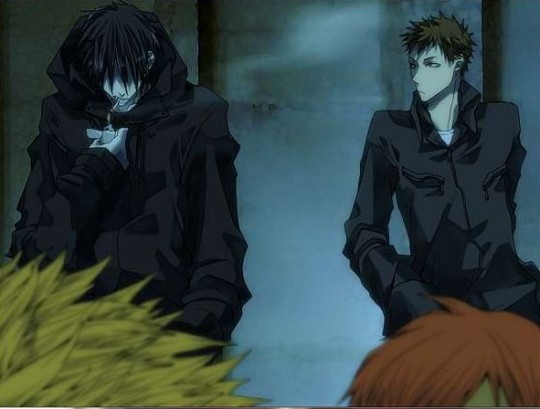
Gakuen Heaven 2 ~Double Scramble!~ (R15+)
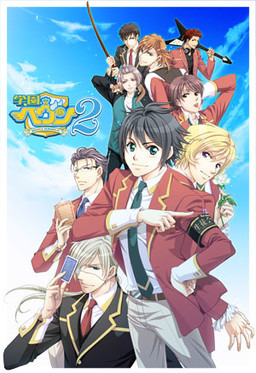
Description:
Bell Liberty School, known as BL School. A near-legendary boarding school attended by elite students chosen from all over the country.
By some stroke of luck, I, Yuki Asahina, am among those chosen to attend this school. But on my first day, I was suddenly given a mysterious armband. Of all things, this armband is apparently the symbol of the ace of the school, the Student Body President.
Wait--does that mean I'm now the Student Body President?!
But there's no time to celebrate. Because the Student Body President has been reduced into nothing but a powerless servant....
Genre: School life, Comedy, Slice of life
Story 2/5
Characters 4/5
Romance 3/5
Artwork 4/5
Sadness level 1/5
Level of disturbing 1/5
Languages: Japanese, English (patch)
Comments: A light school life bl game, no heavy themes, MC is really fun, romance can be good or bad depending on the route, no graphic sexual content, not for people who prefer games with strong plot



Luckydog 1 (R18+)

Description:
It all starts with the slam of a prison door. Four captains from the same Mafia family, the CR:5, are taken out in one fell swoop and left to rot behind bars.
Lucky for them, our hero’s already there.
Gian’s just a run-of-the-mill wiseguy, passing his time doing petty jobs for the family when he’s on the outside and living the lazy life when he’s in the slammer. But those easy days come to an end when he gets word from the boss: if he can break the captains out, Gian will earn a spot at the top of the hierarchy.
Can he pull off a job this big, or is it more than even Gian’s fabled good luck can manage?
Genre: Action, Violence, Mafia, Comedy, Historical (US-America 1930s)
Story 5/5
Characters 5/5
Romance 3/5
Artwork 3/5
Sadness level 1/5
Level of disturbing 3/5
Language: Japanese, English (Online translation)
Comments: Strong-mined main character, gameplay based on luck of the MC, a decent amount of dub-con, it's mafia so don't expect them to be good guys



9 notes
·
View notes
Text
I realize in this* convoluted series of posts I was so focused on gym leaders and elite four as the sort of core of any games cast that I just casually neglected a bunch of side characters, so I figure it's a good time to go back and rectify some of that, starting with the now topical Kalos team...
*[Kanto] [Johto] [Hoenn] [Sinnoh] [Unova] [Kalos] [Alola] [Galar] [Hisui] [Champs] [Paldea] [Paldea2] [Paldea3] [Teams] [Misc.]

While they are in fact all named after plants, they are also themed around the ABCMX classification system for solar flares.
Aliana's name is actually AKEBI[アケビ] as in akebi[木通] the japanese name of the Akebia quinata, commonly called the chocolate vine, five-leaf chocolate vine or just five-leaf akebia.
Bryony's name in japanese is just BARA[バラ] as in bara[薔薇]: "rose." A bizarre choice for a character with a green motif, and odd for such a minor side character when Roses are so iconic and universally beloved. Kind of feels, like a waste.
Celosia's name was CORREA[コレア] after the genus of flower shrubs that includes things like the common correa(aka native fuchsia), the Salmon Correa i used in the picture above, and the Dusky Bell among others.
Mable is in fact named MOMIJI[モミジ], after momiji[紅葉]: Japanese Maple, which seemed confusing at first, as those are obviously famously red leaved, but it turns out there are some prizes cultivars that can turns range of purples and violets instead, and as an odd result of this there are notorious scams built around the faking of a mythic japanese blue maple mutation. (Although the other flowers aren't perfect matches to their girls' color schemes either so maybe that's a coincidence)
Xerosic's name was originally XEROSICY[クセロシキ] named after Xerosicyos, a genus of plant notable for their round flat leaves, perhaps most notably the Xerosicyos danguyi: the Silver-Dollar Plant.
oh but there's more...

But other than the obvious Flare association, it also ties back into the sun themes evoked by Lysandre being a descendent of AZ/his brother and as a kind of Kalos/France tied to the Parfum Palace/Palace of Versailles, is a parallel to King Louis XIV, le Roi Soleil:"The Sun King".
Also Lysandre's name in Japanese is just straight up Fleurdelis[フラダリ] which is of course extremely silly sounding. But the ⚜️ is itself designed after the Lily flower, and of course so is the Ultimate Weapon and AZ's special Floette.
In this vein I figured I could tackle a handful of other villain teams. A fun if obtuse one is that the extended Team Rocket cast in HGSS are in fact all named after rockets, both space ships and missiles.

Archer was originally APOLLO[アポロ] named after the Apollo Missions carried out by NASA throughout the 60s, utilizing the Saturn V model rockets that would eventually put the first manned crew on the moon with the Apollo 11.
Ariana is ATHENA[アテナ] was named after the Athena series rockets built and launched throughout the 1990s. I get the feeling they just picked it because it had a conveniently complementary name to Apollo.
Petrel is LAMBDA[ラムダ] is named after a family of rockets made in Japan and launched the first Japanese satellite, the Osumi, into space in 1970.
and finally Proton was just LANCE[ランス] and seemingly named after the MGM-52 Lance missiles developed by the US military in the `1970s.

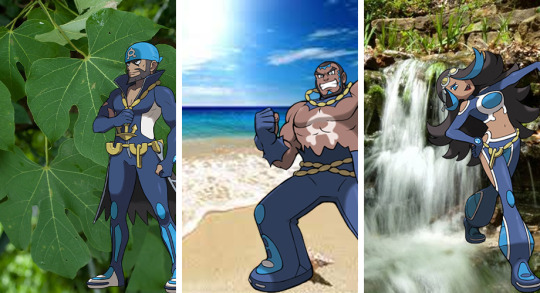
Oddly while Maxie and Archie are named after flowers...
Maxie was MATSUBUSA[マツブサ] after the matsubasa[松房] tree, a type of star anise with a distinctive red starburst shaped flower.
Archie was AOGIRI[アオギリ] the Chinese-parasol tree, which is actually kind of underwhelming plant to have as a namesake, but the actual etymology of the name aogiri[青桐] is "Blue+Pauloniwa" and I assume the association with Blue is really the motivating factor re.
Courtney was KAGARI[カガリ] from kagari[篝] the Japanese word for a metal basket like structure that you put on a pedestal or tripod to put firewood in to burn as like a big torch. It can also refer to a bonfire.
Tabitha is HOMURA[ホムラ] from homura[炎] which is just the word for a flame or a blaze.
Matt is just USHIO[ウシオ] from ushio[潮]: "tide"
and Shelley is IZUMI[イズミ] from izumi[泉]: a "spring" or "fountain" of water.

Galaxy's are all obvious, although in English they renamed Pluto to Charon, Pluto's coorbital moon.
Oh and Cyrus himself being the only person not named after a planet, was named AKAGI[アカギ] after the Bishop Wood tree, akagi[赤木].

Okay so for one it's bonkers that N's real name is NATURAL HARMONIA[ナチュラル・ハルモニア] which, given some context I'm going to say is a reference to Natural Harmonics in music. But let me be real with you: I don't know shit about music theory so I cannot verify that claim, nor was I able to verify if the image I was googling to throw up here even accurately depicts "Natural Harmony" so take this one in particular with a hefty grain of salt...
And with that disclaimer in mind, Ghetsis's name is actually G-Cis HARMONIA[ゲーチス・ハルモニア], G-Cis as in "G-C♯" which is a tritone, and tritone's have the curious nickname of "The Devil's Interval" or diabolus in musica:"The Devil in Music" because of the extreme dissonance the gap in tone makes.
then there's N's foster sisters, Anthea, whose real name is VERBENA[バーベナ], after the flower Verbena, which has a variety of divine and mystical associations in western culture.
and Concordia's name is actually HELENA[ヘレナ] named after the St.Helena Olive, which I take from her epithet as "Goddess of Peace" is meant to reference an olive branch as a symbolic peace offering.

Then there's also Colress, named Achroma[アクロマ] as in "Achromatic", as in Without Color, hence the English name being "Colorless."
And then there's the other sages:
ROOD[ロット] Dutch for "Red"
Bronius was originally SUMRA[スムラ] from the arabic word samra[*] for "brown/tawny/deep yellow." (*I tried to copy paste the arabic text here but for some reason it and the brackets together were really screwing up the formatting...)
GIALLO[ジャロ] like Rood was unchanged, and is just Italian for "Yellow."
Ryoku was shortened from RYOKUSHI[リョクシ] as in ryokushi[緑色]: "green."
Gorm was AZULA[アスラ] From the Spanish Azul:"Blue"
and Zinzolin was named ヴィオ[ヴィオ] from Violet. Technically a few languages all spell it the same, but of note, the "English" name Zinzolin is French for a reddish-violet color
Bafflingly the Seven Sages includes Ghetsis, who of course is not named after a color, so between him and Bronius/Sumra being brown, they do not make a seven color rainbow spectrum. Why no Indigo or Orange? And why a green sage when Ghetsis and N have such strong green color coding? Why don't the sprites for the sages match their color namesakes???
Also the Seven Sages could have been a harmonic scale reference, yet aren't?? despite N and Ghetsis' thing.
It's interesting that Zinzolin is the one sage who comes back with NeoPlasma in BW2, and he is the one named in French... I wonder if he'll make an appearance in Z-A.

Team Skull we did in the Alola captains batch oh wait wtf no I didn't.. Weird, I coudl have sworn iI included Plumeria and Guzma since they were clearly positioned as sort of pseudo captains for Poison and Bug types.
Guzma's name was in fact just GUZMA[グズマ] in Japanese, from the Guamania genus of Tufted Airplant
and Plumeria's name was PLUMERI[プルメリ] from the plumeria flower, aka frangipani.

But there's still the Aether Foundation, the "surprise" real evil team of the game. Lusimine, Lillie, Gladion, Faba and Wicke.
Lillie's name is basically the same in English and Japanese, LILIE[リーリエ] the German name for the lily, and of course her overall disposition and design are clearly based on a pure white lily.
Gladion's name is GLADIO[グラジオ] it could easily refer directly to the Gladiolus flower, the "sword flower", but I'm assuming it's from Gladiole specifically, as that's the German name for the flower, and the whole of not just Lusamine's family but the Aether staff as well are all named in German.
Lusamine's name is basically the same in Japanese, although it was probably meant to be romanized as LSAMINE[ルザミーネ] because it comes from Balsamine, German name of the Balsam plant,
Faba's name was Saubuoh[ザオボー] from Saubohne, German name for the Fava bean, which accounts for his coloration.
Wicke is just WICKE[ビッケ] again the German name for the Vetch plant.
oh and Mohn's name is MOHN[モーン] and it's German for Poppy. Unlike the Poppy in Paldea, whose look is based on the flower in bloom, I'm pretty certain from his build and his hair/hat that Mohn is supposed to look like a Poppy seed, the type you'd harvest milk of the poppy, or poppy's tears from... to make opium...
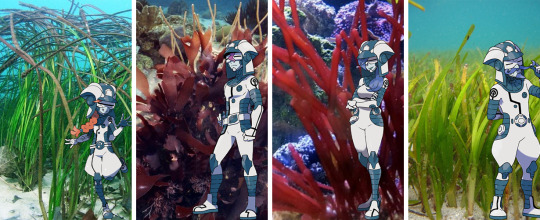
Also the Ultra Recon Squad, who have a fun theme were, to play into the way they come from a lightless alien world, they're all named after underwater plants or algae. I especially like the algae ones because despite how some alga, like kelp and seaweeds tend to look, they are not in fact plants, and this familiar yet different relationship feels like it fits the themes of the Ultra Beasts.
Dulse is in fact just DULSE[ダルス] a type of algae found in the waters around Ireland and Sctoland
Zossie's name is AMAMO[ア��モ] from amamo[甘藻] the Japanese name for Eelgrass(Zostera marina)
Soliera's name is MIRIN[ミリン] which is the Japanese name for the genus Solieria
Phyco's name is SHIONIRA[シオニラ] is from the Japanese name for the Alismatales order of plants comprising a wide range of species, some of which grow near bodies of water, some grow in or above the water, and others still grow entirely underwater.
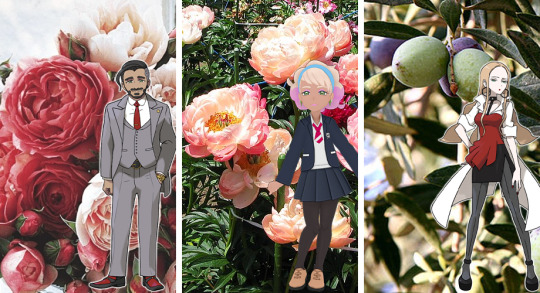
So obviously Rose is ROSE[ローズ], who I guess msut have seemed too obvious because I totally skipped him before... His brother Peony is a play on the fact that the Rose and Peony are sort of undisputed romantic icons in the west and east respectively, although some of the rose's reputation has bled into the east as well. (also i forgot to put it in the image but the Tudor rose and Galar being England feels obvious even if it didn't really play into the plot or themes of SwSh's story)
Speaking of Peony... His daughter Peonia's name is actually SHAKUYA[シャクヤ] from shakuya[芍薬] the Japanese name for the Chinese peony (Paeonia lactiflora).
Oleana's name was actually just OLIVE[オリーヴ].
Oddly there's not really anyone of note that's actually a member of Team Yell, they don't have a real leader or admins, just Marnie as the object of their support.

I did everyone in Team Star in my first Paldea post, but worth noting is the alias Cassiopeia refers to the constellation, hence team Star, but moreover the individual star squads are each named after a major star within the constellation: Segin, Ruchbah, Tsih, Schedar, and Caph. (Tsih and Navi are two names for the star γ(gamma) Cassiopeiae, just labeled "γ" above.)
And with that we're all brought up to speed with evil teams, until Z-A drops some new ones on us...
3 notes
·
View notes
Text
P5X: What We Know About The Game
Now that P5X’s beta playtest, which ran from March 29th to 31st, has closed, here’s a summary of what we know about the game itself so far. Hopefully this’ll be useful both for anyone who hasn’t been keeping up with the news about it and for anyone who has been keeping up, but wants the information all in one place.
After this post, I’ll make separate posts going into what we know about each new playable character, as well. I’ve also already made a post summarizing the first Palace’s worth of the story (as that’s what the beta playtest showcased) which can be found in my pinned post once I update it hopefully tomorrow.
I’m keeping this post as succinct as possible, but it’s still enough to belong under a readmore, haha.
Overview
P5X is a turn-based RPG mobile game with gacha elements, developed by Black Wings Game Studio and published by Perfect World Games. While not directly creating it, it is officially licensed by Atlus, and Atlus has apparently been very involved in its production, including Shigenori Soejima designing the protagonist and his Persona.
The game’s text is in Chinese, but all the voice acting, at least in the beta, was in Japanese.
There are specifically two gachas in the game- a character gacha for gaining teammates, and a weapons gacha for gaining better weapons for those teammates.
Right now, we know the game will release on both mobile and PC, but it’s unconfirmed whether it will release anywhere outside of China, and we don’t have a release date for even the original Chinese version of the game.
The Characters
So far there are nine known new Persona users: Wonder (the protagonist), an owl whose name is unofficially translated as Luffy (codename Cattle), a sporty girl named Motoha Arai (codename Closer), three characters that were only obtainable via the gacha in the beta named Seiji Shiratori (Seiji), Kotone Montagne (Mont), and Yukimi Fujikawa (Yuki), and three future teammates identified via datamining: a rules-abiding student named Riko Tanemura, a blue-haired punk student who some files call “Soy”, and a green-haired person of the Star arcana that files refer to as both “Hupo” and “Leo”, with “Leo” being their codename.
The Velvet Room also has a new attendant, named Merope, pronounced like the star.
Also available, only in the character gacha (at least in the beta), are the original P5′s playable characters: Joker, Skull, Mona, Panther, Fox, Queen, Oracle, Noir, and Crow. In-game they are explained as cognitive beings, rather than the in-game real-world people. Datamining has also found some of Wolf’s battle voice lines from P5S, and an icon from P5S with Sophie, in the files of the beta playtest, suggesting they may later be added as well. No sign of Violet has been found yet.
Munehisa Iwai also returns, running Untouchable and specifically the weapons gacha in P5X. Tae Takemi was able to be talked to in the beta, but had no game role, and Chihaya Mifune also made a cameo. The other original P5 Confidants’ talk portraits have been datamined from the beta, but it’s currently unknown whether they’ll actually return in any capacity.
The Music
Three new songs sung by Lyn were found in the beta: “Last Strike”, “Wake Up Your Hero”, and “Shadow Loop”. In addition, two other new instrumental themes were found: “Elite Battle” and “Fatal Desire”. The rest of the beta’s soundtrack was just songs from P5.
Locations
Many of P5 and P5R’s locations have been confirmed for P5X, including Yongen-Jaya, Kichijoji, and Shibuya, but the protagonist lives in a new location called Zoshigaya, and goes to a new school called Kokatsu Academy.
(Note that while Yongen-Jaya exists, Leblanc has been replaced with a generic coffee shop, run by someone other than Sojiro Sakura. Similarly, the Big Bang Burger in Shibuya is now just called Big Burger, with no apparent traces of the space theming.)
Mementos and the concept of Palaces also return in P5X, though there are some differences. At least in the beta, Mementos operated as a sort of hub, with characters entering the single Palace included in the beta through Mementos, from the entrance to the Palace located within the massive, set (as opposed to randomly generated), singular floor of Mementos available in the beta. Mementos also had three special battle locations apparently similar to “domains” in Genshin Impact, where completing the fight gives special items to strengthen characters and weapons, themed after the first three of P5′s Palaces.
Basic Game Mechanics
For the most part, P5X’s beta operated extremely similarly to P5, both in and out of the Metaverse. One notable difference is that the calendar doesn’t seem to be progressed by anything but the story- other activities, such as working, crafting infiltration tools, and spending time with Confidants, instead cost hourglasses to do (which are replenished daily), without being restricted to a single afternoon and nighttime time slot each day, as was the case in P5.
One interesting and more significant change made in this category is that the Confidants have what appears to be a total of 20 ranks, instead of the series-standard 10.
The UI elements of combat look a little different (as well as all the skill animations), appearing to be more optimized for mobile play, but otherwise seem largely the same to P5, though one notable difference is that it seems Navigator skills can be called in at will, rather than occurring randomly. There is a new kind of special attack called a Highlight Attack, which is similar to P5S’s Showtime attacks where the character executes a special attack with their Persona.
The protagonist can gain Personas by talking to shadows, and fuse them in the Velvet Room. Challenge battles in the Velvet Room, like in P5R, are available to attempt. Palace exploration also seems relatively standard, even if the Palace itself and the method of entering it is different. One major change is that several shadow/Persona designs have been censored- such as Incubus now wearing shorts, Bugs’ stomach is repaired and the bloodstains are gone, and Hell Biker has a helmet covering his flaming skull- but this only seems to be a cosmetic change.
Miscellaneous
It’s worth noting that because the game has yet to be officially translated to English in any capacity, character names can only be absolutely confirmed when they’re either written in Japanese kana (as opposed to the Japanese kanji characters names are typically written) or spoken aloud in official material, to confirm which reading of the names is correct. All the codenames are written in English and thus easily confirmed, but the only teammates’ names confirmed in the beta are Motoha Arai, Yukimi Fujikawa, and Riko Tanemura. Seiji Shiratori and Kotone Montagne’s may have also been confirmed in the beta, but at least as of posting this, I haven’t been able to find proof of it in any gameplay videos available online. Luffy’s name is a particular outlier here, in that it is spoken aloud in the game, but as “Ruferu” instead, and it’s currently unknown whether Luffy will be the official translation of that or not.
And just to close this out, keep in mind that the majority of our information about the gameplay specifically comes from the beta version, and thus things may change in a later beta playtest and/or in the actual release of the game. This post is up to date as of 4/1/23 when it was written, but it won’t necessarily be accurate forever!
#persona#p5x#persona 5x#persona 5 the phantom x#game info#ough I hope I didn't forget anything. feel free to send in questions/mention in the tags if I missed something and I'll update this!#first beta
19 notes
·
View notes
Text

Warnings: Mentions of Body image Issues, Severe weight loss, past mental health issues
(divider)
Meet the OC - Emery
Name: Emery Annbeth Weston
From: Denver, CO
Born: 9th November, 1993
Siblings: 1 younger brother
Hair color: brown
Eye Color: brown
Height: 5’6
Weight: 124 lbs

When she was 12, she developed an eating disorder, due to bullying that occurred from school. Despite being a perfect weight for her age, people called her names (fat, ugly) so she stopped eating almost completely. It got to an extreme, when she was 15 and barely weighed 71 pounds.
For her 16th birthday, her family took her to a nearby WWE Smackdown show, where she was able to meet some of her favorites (Jeff Hardy, Rey Mysterio, Kofi Kingston, Beth Phoenix). The one that stood out the most to her, that took time to really talk to her, was Kofi Kingston. Just seeing how thin she was worried Kofi, and he made a deal with her—Get to a healthy weight, and when she becomes a star, he’ll team with her and they’ll win the (to be created) intergender tag team championships.
Emery was filled with emotions after their talk, and while it took quite some time, she eventually got to a healthy weight and even began getting some muscle mass.
Favorite Wrestlers growing up:
Jeff Hardy, John Cena, Rey Mysterio, Lita
Debuts in Wrestling:
October 2013 – Ring of Honor
March 2015 – New Japan Pro Wrestling
Officially joined Bullet Club in June 2015
May 2019 – All Elite Wrestling
Wrestling Style:
Arial, slight risk taker (look at who her favorites were, after all)
Paired With:
Kenny Omega, Hangman Adam Page, Riley/El Phantasmo, Damian Priest, Orange Cassidy, Darby Allin, Wardlow, Jay White (Potentially: Jey Uso, Trent Seven, Chuck Taylor)
Best Friends with:
Kenny Omega, Matt Jackson, Nick Jackson, Hangman Adam Page, Jay White, Kyle O’Reilly
Friends with:
Austin Creed, Kofi Kingston, Marko Stunt, El Phantasmo, Chuck Taylor, Brandon Cutler
Who is like Family to her?
Kyle O'Reilly: She's rather protective over; make sure he's keeping an eye on his sugar levels and always has a snack on hand for him if need be
Matt and Nick: They met her early in her career and took her in under their wings, helping to train her when they were in the area. They're rather protective over her, love to tease her on occasion, and they wouldn't trade her for the world.
Who would she like to meet in the Business?
Finn Balor
Damian Priest
Pete Dunne (birthday twins~ )
Imperium (4 members, Walter, Fabian, Marcel and Thatcher)
Seth Rollins
First Crush:
Jeff Hardy
Hobbies:
Playing Video Games, photography, travel and drawing
If she couldn’t wrestle anymore she would:
Either just be a streamer or become a professional artist/start own business
Secret of hers:
She mayyyy, (or may not 😒 ) have a thing for older guys. 8-13 years older than her.
Languages known:
Japanese (10%)
Italian (78%)
English
Spanish (9%)
French (24%)
Phobias: Snakes, drowning
Number of Tattoos: 5
Number of Piercings: 2 (normal ear ones – though during her Bullet Club Dark Angel days, she did consider getting a lip and tongue piercing)
Any History of broken bones?
When she was 6, she fractured a bone in her arm. Luckily, it didn’t require surgery.
Any injuries from wrestling?
In early 2014, after starting in ROH, she got knocked off a ladder and landed awkwardly. No concussions or breaks/fractures, but she sprained her ankle.
Mid 2014, she was on the receiving end of a face-plant type maneuver and her nose got broken. They were able to reset it and it healed fine.
Behind the Story of ‘Dark Angel’ persona
For the beginning of her career, Emery was a baby face. She didn���t want to be booed; she didn’t want to be a ‘bad guy’. She liked being a baby face. A lot of people suggested she try though, to see if she liked it or not, and if not then it could always be switched back.
She wasn’t convinced though.
When she made the trip to Japan, it was only meant to be temporary, for a few months at most. She got to hang out with her ROH friends like the Bucks—who in turn, introduced her to Kenny.
That was the moment all plans went out the window. The two of them hit it off and became almost inseparable. Gaming, arcades, cat cafes—they bonded over everything it seemed like. She got a good look at his Heel persona, the Cleaner, and wondered… perhaps it wouldn’t be too terrible?
With a little nudge from Kenny and some artistic input, they worked together in just mere months to create the Dark Angel version. Short blue hair, almost all black, punk-style clothing, and a badass attitude
At first, she only wore more moderate clothing. Things that covered her-- issues stemming from her weight issues as a teen. However, after many conversations with not only Kenny, but Jay, Ibushi, Matt, Nick, and both Adams, she risked it all and wore slightly more revealing clothing, short shorts, skirts and cut-off shirts. And she began to love her body.
She’d cost people matches, interfere, attack people – even people twice her size—and she done it all with a smile and laughing maniacally.
Some people compared her to Harley Quinn or even the Joker.
Over the course of the next year, Emery got better at conniving and being devious, calculating and began to show disregard for Bullet Club enemies.
In 2017, she went with Kenny and got her first tattoo. A full-size pair of Angel wings on her back. After getting it, she no longer needed to wear the wing prop she had worn in previous years.
She figured, if she played an Angel, she might as well have wings. This is the moment that brought upon Kenny nicknaming her his ‘Angel’
#all elite wrestling#world wrestling entertainment#dark angel of the bullet club#AEW#WWE#NJPW#OC Emery#OC#Original Female Character#Multiple Pairings#Kenny Omega#Damian Priest#El Phantasmo#Hangman Adam Page#Orange Cassidy#Chuck Taylor
9 notes
·
View notes
Text
Thought about posting a description page of my original characters from Tabula Rasa, the Lies of P / Ai Somnium crossover fiction I'm working on. Have pictures and data under the cut! n_n
The data seen here are before the chapters that I have published online already. Some aspects have been changed since then, but those are mentioned in the chapters.
Content warning! Mentions of domestic abuse.
Current name: Gloria Goldstein
Previous name: Gloria Zabolotny
Online handle: Burp
Age: 29
Occupation: Agent of ABIS, psyncer.
Partners: Kanra, Victor Sullivan
Speciality: Hypersensitive auditorial sense. She can usually tell if a person is lying, just by listening to their intonation. Her skill is usually 75% accurate, so she doesn't take it for granted.
Hobbies: Martial arts, wine drinking, listening to music.
Likes: snails, snakes, pestering Victor, trolling around with Kanra, the internet.
Dislikes: bullies, old people who harass her for her seat on the bus, touching noodles.
Negative personality traits: despite her talent and normal amount of empathy, she sometimes says very inappropriate and borderline rude things. She tends to talk before thinking first. She is also very emotionally driven and can see red very quickly.
Background:
Gloria is an only child, daughter of Molly Smith and Laslo Zabolotny. Up until she was five years old, Gloria had a normal childhood, but after her father was fired from his job, Laslo turned alcoholic and regularly beat his wife and child. The family soon got pushed to the edge of poverty. Despite this, Gloria managed to enroll in an elite elementary school due to insane luck, where she met Victor, the only son of a wealthy family. Unbeknownst to them, just a small interaction sparked a lifelong friendship between the two.
After years of struggle, Gloria's mother divorced and never got married again. She took custody of Gloria and although they were safe from the abusive father, the mental scars remained. After the divorce, Molly changed Gloria's name to Goldstein, much to the girl's joy. Gloria then took on different jobs to help keep her and her mother afloat and sometimes Victor helped them out financially.
After finishing her psychological studies in university, Victor encouraged Gloria to try her luck with one of the open positions at the newly formed branch of ABIS, where he was working as head technical developer on a project. Gloria got the job and now she works alongside Victor.
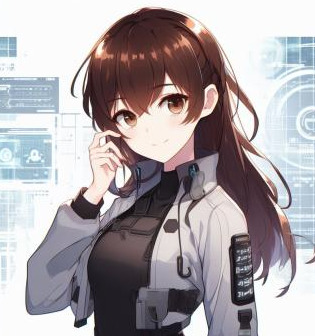
Gloria Golstein, before the events of Tabula Rasa.
______________________________________
Name: Kanra
Age: 3
Occupation: AI ball
Father: Victor Sullivan, however the blueprints for his creation were made by Pewter in the Japanese branch of ABIS. Kanra is based on Aiba, but Victor tweaked the pink AI ball up a bit.
Partner: Gloria Goldstein, Victor Sullivan, Jeremy.
Special features:
Kanra can bring music into Somniums, hence his avatar always had headphones on. This feature was added due to Gloria's speciality with auditory sensory.
Kanra, when interacting in the real world, can turn himself into a 'necklace'. In this form, Gloria can wear him and disguise him as a piece of gaudy jewellery.
Kanra can also create a hologram of himself, so people can view his human form outside a Somnium.
Likes: trolling Victor, Gloria, puns and inappropriate jokes, corrupting Jeremy.
Dislikes: ping pong
Kanra's hamster form:
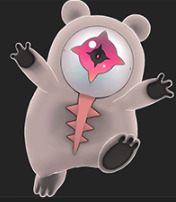
Kanra's human form in Somnium:
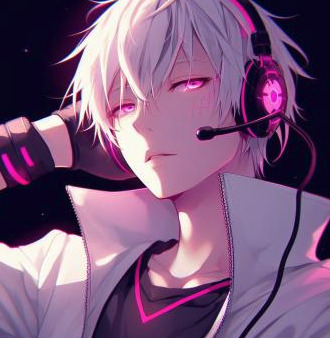
Despite his sassy attitude, Kanra does care about his human and AI peers, as much as an AI can.
______________________________________
Name: Victor Sullivan
Online handle: Zip
Age: 30
Occupation: Agent of ABIS, lead technical developer.
Partners: Kanra, Gloria Goldstein
Hobbies: playing video games, playing chess, shooting with guns, guns, guns.
Likes: guns, spaghetti, teasing Victoria, guns, cats, anime, video games and bodypillows.
Dislikes: olives on pizza
Negative personality traits: he can be stubborn as a mule. Despite having a decent amount of empathy, he unfortunately can be stuck running around in circles and growling about the same issue, only for the sake of getting angry and lashing out. Despite the solution being in front of him, he sometimes stubbornly remains where he is, just to prove a (ridiculous) point.
Background:
Victor Sullivan was born to Jasmine Hertz and Frank Sullivan. The Sullivan family has acquired great wealth over the last decades due to the family's technical genius and the only child of Jasmine and Frank has been pampered since his birth. Alas, just how with most rich kid's stories, Victor has always felt a constant lack in his life and that was true connection.
Most of the people who interacted with him had an ulterior motive, no matter what age. He learned it fairly quickly in elementary school, how children can be just as shallow as adults. He was always a stellar student, but a lone wolf.
During his time in elementary school, he met Gloria, the only oddball in his class, who not only was refreshingly honest, but came from a vastly different family background as well. The two struck a friendship, after one interaction.
Their relationship deepend in highschool, where Victor first realized he wasn't really into girls and opened up to Gloria about it. Her being so open and accepting about his sexuality cemented their friendship forever. Later, he realized he was actually bisexual and updated Gloria about it, who again, had a very open reaction to it, much to the young man's joy.
Victor hid his sexual orientation from his parents until he managed to move away and received his job at ABIS as a technical developer. The family had mixed reactions about his coming out, but they are supporting their child, despite not truly understanding the concept.
Victor is also a technical genius, who automatized his entire home, he barely has to do anything. He received his job at ABIS when he recreated the AI ball for the entrance exam and even added new features to it.
After from Kanra, he created Jeremy.
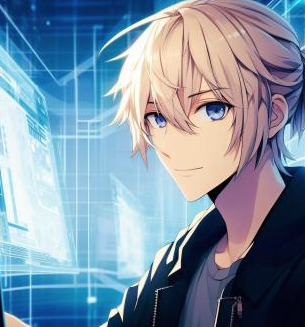
Victor Sullivan, as he is usually seen. He sometimes puts his hair in a ponytail, but most of the time, he lets his hair down, where he resembles a certain mafioso in Death Note.
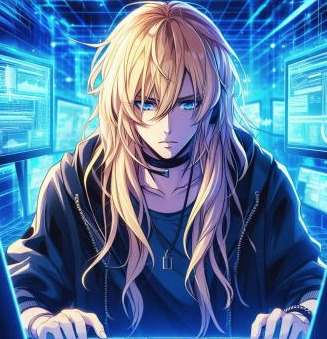
Sometimes, when he's on a video game or series binge for months, he stops cutting his hair.
______________________________________
Name: Jeremy
Age: 2
Occupation: Emotional support AI ball for P
Father: Victor Sullivan, however the blueprints for his creation were made by Pewter in the Japanese branch of ABIS. He has no extra features, has the same functions as Aiba does.
Partner: P, Victor Sullivan, Kanra
Special features:
Jeremy, when interacting in the real world, can turn himself into a 'necklace' as well.
Despite having the ability, Jeremy almost never psyncs. He can make a hologram of himself, just like Kanra, so people can see him without entering a Somnium.
Likes: P, Kanra, Victor, Gloria and butterflies
Dislikes: Violence
Jeremy's hamster form:

Jeremy's human avatar in Somnium:
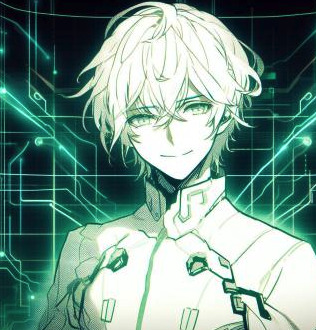
3 notes
·
View notes
Text
Should You Watch Mashle?

(Full English title: Mashle: Magic and Muscles)
(Japanese title: Mashle)
A Brief Summary
In a world where magic is used for everything, not having magic is a death sentence - and it’s easy to tell if someone is magic-less as all magic users have a mark on their face. But one little baby without magic got a lucky break and was raised in the woods, hidden from the world. With not much to do in said woods, this baby grew up with a lot of physical training. Like… a lot. So much, that when the magic users do eventually find him, he can deflect their spells with his sheer physical might alone.
So now Mash, with no magic ability, needs to go undercover in an elite magical academy to rise up in the ranks and become someone with enough power to change the way the world full of magic thinks of those without it.
So, should you watch the anime?
Yes, as long as you enjoy typical Shounen Jump style stories.
Take one part Harry Potter, one part One Punch Man, and add in Mob’s haircut (from Mob Psycho 100). Boom, you have Mashle. This show isn’t changing the world or anything, but it’s an amusing way to pass the time.
While a lot of basic bits seem to be literally ripped out of Harry Potter (including a game almost identical to Quidditch), the smaller details are definitely original - which is good, because otherwise I’m sure JK Rowling would sue, lol.
Most of the spells the students have in their repertoire are battle-focused, with certain students having essentially bloodline techniques. While Mash doesn’t have any actual magic, his “spells” generally refer to whatever muscles he’s using to conquer the challenge.
The school has regular courses (potion making and the like), but the meat of the show is the battles Mash and friends find themselves in. And, while it feels very typical shounen, it’s fun to watch the weird magic techniques and how our heroes can figure out ways to overpower someone that would normally seem to be the obvious winner.
The goal of most of these battles is for coins. To be considered the best, someone needs a certain amount of gold coins by the end of the school year. There are ways to earn coins via academic measures, but that’s not the way the students end up earning most of their coins in this show. That main method is betting between themselves and fighting it out. And Mashle packs in a lot of fights for being only 12 episodes long. In fact, it’s mostly fights. This isn’t a bad thing, but if you’re looking for deep and impactful character development, look elsewhere. If you’re looking for fun action, you’ll be happy.
Despite being packed full of action, Mashle has a more comedic spin than a lot of modern shounen, and I found myself chuckling at the antics in more than a few episodes. How Mash finds ways to get around having no magic are usually the best bits. I don’t want to spoil much here, but my favorite is probably how he is able to “fly” on a broom.
The character designs are pretty simple, but in a way I like. They’re easy to identify, which is handy when the opening intro song starts flashing over a dozen characters at you. The fights look good too, with smooth animation. No complaints on the visual side from me, except for the boring robes everyone wears.
By the way, the ending song is a bop, and I watched it every episode - Shu Cream Funky Love forever! Entertaining endings are rare in anime, so I’m always happy to watch one.
There’s an eclectic batch of students at (or involved with) the academy, including:
Best dad/grandpa who is willing to live out in the woods and deal with a kid that opens doors by ripping them off the hinges because he can’t remember to push or pull (Regro).
The “I don’t want to be here today” roommate who has fairly average magic skills and is too much of a doormat to say no when asked to do something (Finn).
The token female of the group who is obsessed with dating/marrying Mash because he saved her (Lemon).
**I’m hoping Lemon gets some good fights/character growth later in the series, because honestly there aren’t any cool female characters in this first season, which is a shame.**
A secretive and powerful student who likes to think himself a lone wolf even though he is always helping his friends out… and who has a major sister complex (Lance).
A hotheaded delinquent type who’s all about trying to look cool for the ladies, but fails miserably because he’s trying too hard (Dot).
And a villainous puppet master willing to do anything to make sure only people he deems worthy are allowed to thrive (Abel).
Plus more eccentric students who want to show off their cool magic techniques (usually in battle)! There are some villain-of-the-week students, but also some that show up later in the season that look like they’ll play a bigger role in things.
Where does it rate on my personal scale?
S: I will buy it at full price (unless it’s released by Aniplex USA, because fuck their pricing).
A: I will buy it on sale sometime down the line.
->B: I had fun watching it, but don’t need to own it.
C: It’s not my cup of tea, but wasn’t awful.
D: Dropped it.
X: Finished it out of spite, but did not enjoy it.
Mashle ranks at a high B. After so many shounen shows have been going darker (like Jujutsu Kaisen, Demon Slayer, and Chainsaw Man - if you count that as shounen), Mashle is refreshing and fun. I will tune in for season two, but I’m not really excited enough to buy it or check out the manga.
2 notes
·
View notes
Text

t.ogami headcanon dump // pulled right from my old blog ( personals do not reblog ) :
togami has been fencing since he was six. he could have enrolled as the shsl fencer but scion was too much up his alley. he also didn’t want to be known for what he considers ‘just a skill’ of his; a skill he finds a bit boring, even rather cliché, about himself. in fact it borders into a bit of an embarrassment. regardless he still really enjoys it and finds it to be a stress relief. though his new peers don’t seem to share this hobby, so he’s sort of dropped it for now.
togami sleeps 2 to 4 hrs per night. he snores. he wears an eye mask, used to regularly do under eye treatments. so !! all of his waking time is devoted, split. there hardly is any free time, and when there is – he isn't sure what to do with it. save for fill it, naturally. hobbies (reading, piano, golf) to people (his peers; fukawa, and then…kirigiri, asahina, naegi…)
talk to me about togami’s need to compartmentalize everything ... from objects to people. about his critically compulsive nature and his calculating methods; how boredom is such a plague on his house, his need to cure it and the lengths he’ll go to ‘keep it interesting’. how utterly mean he is, deliberately biting and deliberately cruel. how focused he is, how bizarrely acute for someone practically bred, worn of battle fatigue and siblings ‘dead’, exiled. how he’s always awake. and how he snores.
togami went through an intense period from 6 to 8 where he would compulsively pull strands of hair from his head, usually in groups of threes. it began with heavy twirling, pulling, and eventually full tearing out of his head. this behavior was distressing, especially for his mother. his hair was kept short, practically buzzed from ages 9 through 12. despite being fitted for this life and the eventual taking of the crown, the immense pressure of being a togami (of earning the title) left distinct behavioral patterns and emotional marks on his psyche through the crucial development period of his younger years.
the behavior was essentially all but forced to a stop, rather cruelly, and the habit only picked up two other times in his life – at 14 and later during the killing game/drthh (around the time of sakura ogami). it takes a lot of focus and mental force, heavy will, to keep this behavior from getting out of control.
togami privately fears the judgment of his peers. more, of being less than at least respected (perfect, perfection)…revered. while this reverence should come from his personal gains, a lot of it stems from influence of the affluent – of being the elite of the elite; the envy of royalty. this is marginally upsetting, of course. how much he has to enforce, practically convince those around him of his well deserved title. usually -- everyone just knows. he earned being a togami; he earned being the chosen one. yet despite his former company, the peers togami ends up needing that unrealistic reverence – that deep, stemming crucial fear (judgment, despair) – are that of his last school class.
togami is not afraid to ask questions, especially if he doesn’t understand or know something. if something doesn’t make sense, he’s usually the first to clear things up.
togami’s favorite wines are white wines, but he insists on drinking red ??? mostly because he thinks it makes him look older and more mature
togami likes if you speak french with him. he is half-french and speaks the language fluently. he enjoys conversing in it whenever possible and even writes personal documents in french. his mother spoke french to him almost exclusively. it was technically his first language, and there is a slight accent that can be detected in his japanese accent.
he also enjoys spanish as he finds it to be another romantic language.
wikia trivia:
Byakuya and Makoto are the only characters to appear in every canon game and anime of the Hope's Peak Series.
He appears to be fluent in French, as he was easily able to read Mukuro's Fenrir Mercenary Corps profile that was written entirely in French, and he also knows how to play all the standard instruments, both skills he likely acquired as part of a standard Togami education.
He enjoys reading, watching movies, and pool games.
Byakuya's former high school, Green Hills High School, is a reference to Green Hill Zone, a level in the Sonic the Hedgehog franchise.
Byakuya appears as a guest character in Chain Chronicle: Brave New Continent.
Byakuya's voice actor, Jason Wishnov, also provides the voice for the Ultimate Imposter in Danganronpa 2: Goodbye Despair and Monodam in Danganronpa V3: Killing Harmony.

#/ * ULTIMATE AFFLUENT PROGENY ( TOGAMI BYAKUYA )#/ * HEADCANON#i fixed some stuff#i love him#he really needs a doc lmao
9 notes
·
View notes
Text
Silent Hill Returns, The Sims 5 Announced, Razer targets Switch, new Mortal Kombat Game, Microsoft prepares to take on Google & Apple!
A whole week as Microsoft has indicated that they will be taking on Google Play Store and Apple's App store. The Sims 5 gets a new set of screenshots, Mortal Kombat goes Mobile, Razer has Nintendo in its sights, and Konami has a vast array of Silent Hill Projects!
🕹️ The Console War Rages On
Splinter Cell remake loses its director - The first mainline Splinter Cell game in a decade has lost its director. David Grivel, who worked for Ubisoft for eleven years, stated, "it was time for him to go on a new adventure". He has previously worked on Splinter Cell Blacklist, Assassin's Creed Unity, and Far Cry 4, 5 and 6. (Source)
PC accessory and computer manufacturer Razer has announced a new handheld gaming system - The announcement came in the form of a YouTube trailer. The system is based on an Android Tablet with a joy-con-like peripheral attached to the sides. It is powered by a Snapdragon G3x Gen 1 with a 144hz AMOLED display. The system is currently in pre-order mode. You will be required to "reserve" a unit. (Source)
The Sims next-generation game has been announced - The Sims "Project Rene" has been revealed. This new iteration of Sims will be cross-platform, which is easy to communicate, share and play across devices, with the game said to offer the same experience across different devices. It was noted that the game is still in very early development. (Source)
DualSense Edge wireless controller has been announced - Sony's answer to Microsoft's Xbox Elite controller. Pre-orders will launch 25th of October, 2022. The package will have multiple hardware and software customizations, with different keycaps, high dome, low dome, half dome caps, and a carrying case. The unit will retail for recommended retail price (RRP) of $199.99 USD/¥29,980 (including tax)/€239.99/£209.99. (Source)
Mortal Kombat Onslaught has been announced - Mortal Kombat Onslaught is a collection-based role-playing game launching in 2023 for the mobile platform. The game is being developed by NetherRealm Studios and will feature a "cinematic story experience". The game sees you collecting fighters and putting together a team in real-time group battles. The game is set for a 2023 release window. (Source)
Digimon World: Next Order for Japanese Switch release in 2023 - The game is set for release on the 22nd of February, 2023. This game is a port of the original game launched for the PS Vita on the 17th of March, 2017. The game will feature a new "beginner" and "run" mode for players. (Source)
Microsoft is working on the Xbox Store - During the CMA's investigation of the 68.7 billion USD acquisition of Activision-Blizzard by Microsoft, documentation has indicated that Microsoft is working on an Xbox Store for their Xbox Mobile Platform. The acquisition intends to use Activision-Blizzard properties to force users to use the Xbox Store rather than the Google Play Store or the Apple App Store. (Source)
Final Fantasy XVI has dropped a new trailer showcasing more of the FFXVI world - The trailer shows off more characters, eikons, and in-game battles. The game is still set for a Summer 2023 release. (Source)
✨ Going to Events Spiritually
Xbox Game Pass gets Persona 5 Royal, Gunfire Reborn, Phantom Abyss, and More.
Konami had their Silent Hill Showcase this week. It features remakes, new games, and a movie.
They announced a remake of Silent Hill 2. The remake will retell the second game's story with some team members from the original studio. The remake is set for the PS5 and is being developed by Bloober Team.
Silent Hill: Townfall is a new spinoff by No Code Studios and publisher Annapurna Interactive. It is said this will be a unique take on the franchise.
Silent Hill f is a new spinoff set in 1960s Japan. The game will be a narrative-driven experience written by the acclaimed Japanese writer, Ryukishi07. Best known for their visual novels like Higurashi.
Silent Hill: Ascension is an interactive project where participants worldwide will control the characters in a new Silent Hill Story. Silent Hill: Ascension is a collaboration between Genvid Entertainment, Bad Robot Games, Behaviour Interactive, and dj2 Entertainment.
Return to Silent Hill, the third movie in the film franchise, will see the return of Christophe Gans, the first movie's director. Konami has promised more information about the project at a later date.
🎮 Where's My Controller?
I picked up Megaman 11 last week since it was on sale, and this has to be one of the best modern Megaman games out there. I am pretty much nearing the end. But this has my renewed interest in more games. Honestly, the mechanics were so simply fluid and smooth. It just felt so fun to jump 'n shoot.
📝I don't know what a pen looks like.
I finally uploaded the video version of my Blue Reflection piece. The video is 16 minutes long, but if you haven't gotten time to read my Blue Reflection piece, check out the video review on YouTube.
I am having a bit of trouble finishing my other articles, but I'll see what I can get done over the next couple of weeks.
💖 Enjoy this newsletter?
Forward to a friend and let them know where they can subscribe (hint: it's here).
#newsletter#nintendo#switch#sony playstation#sony#microsoft#xbox#silent hill#konami#megaman#final fantasy xvi#digimon#the sims#sims#the sims 5
2 notes
·
View notes